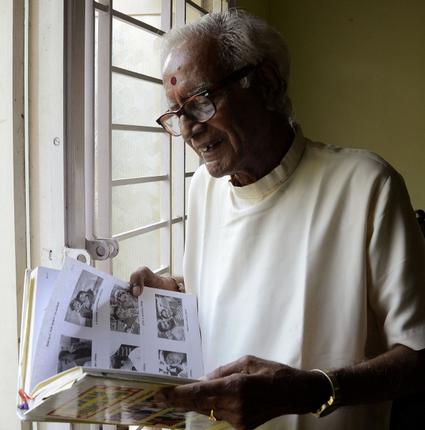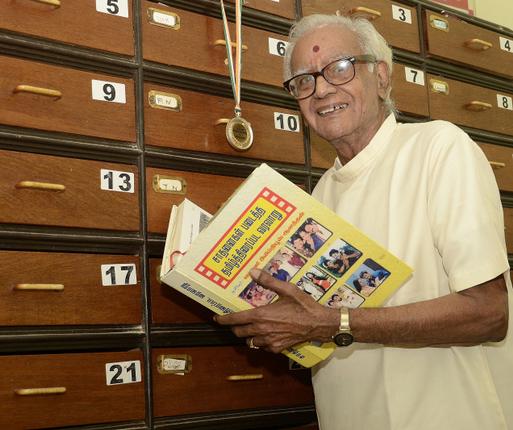
It could well be curtains for flawless archiving of South Indian cinema
In the past two decades my interactions with this unique personality were many. Every time I needed pictures for a story on cinema, all I had to do was call up ‘Film News’ Anandan. He would attend the call himself. “Sir, I need a few pictures. Can I come over this evening?” “Sure, just give me the details and they will be ready,” he would say. And I would find them in a cover, neatly labelled with the essential information. His only request was that I return them after use.
Every time I visited Anandan I was awestruck by his simplicity and self-effacing nature. In fact, he would even sound slightly diffident. Like the time when he hesitantly walked up to Sivaji Ganesan, who was sitting under a tree at the shooting spot of ‘Raja Rani,’ and requested him to pose for him. Anandan’s career in cinema began with that click! “Great man, he immediately obliged,” he would recall often. His passion for photography and love for his prized possession, a rolleiflex camera, may not be known to all.
Also few may be aware of his knowledge of Carnatic music. We were walking out after the press show of ‘Subramaniapuram,’ when he told me, “I enjoyed that song in Reetigowla. The new composer, James Vasanthan, has done a good job.” Even later, during our conversations Anandan would dwell on the music of films of Tyagaraja Bhagavathar and the kritis of Saint Tyagaraja, used in cinema.
Anandan never forgot kind gestures. M.G. Ramachandran, who enabled him to become the first PRO in cinema, was often in his thoughts. So was Jayalalithaa. She was instrumental in the State Government buying over Anandan’s archival collection. She had planned to make it into a permanent exhibition. “I can’t thank her enough,” he said. Yet I sensed both agony and ecstasy, when he told me in a choked voice that parting with his ‘treasure’ wasn’t easy. It was just a week after he had handed over his collection.

Newspapers, cuttings from them, notepads and dairies of details on cinema were seen everywhere in his room always. “These are my years of hard work. This is not junk, this is my life. Nothing would upset me more than sitting in a neat room without these possessions around me,” he would smile with pride as he cleared some of the papers on the sofa for me to sit down.
The last time I met him was more than a year ago. He mentioned that the State Government had honoured him enough. So it was the Centre’s turn? He simply smiled. His meticulous chronicling will be an objet de vertu for generations of students of cinema. The diligence ought to be recognised, at least now.
When I entered Anandan’s home to pay my last respects, his daughter was standing beside her father’s body. Tears welled up in her eyes. “Just before he died, he mentioned three letters. We couldn’t understand them. He then asked, ‘Did all the films scheduled for Friday get released?’ ‘Yes, appa, they have all come out,’ I said. Next he uttered the word, ‘Sivaji’ and passed away.”
Ironically, the man’s first step into cinema began with clicking Sivaji Ganesan, and his last breath was with the name of the thespian on his lips!
source: http://www.thehindu.com / The Hindu / Home> Features> Friday Review> History & Culture / by Malathi Rangarajan / March 24th, 2016